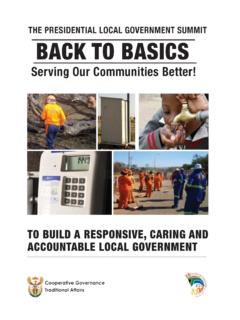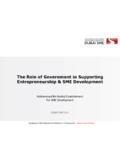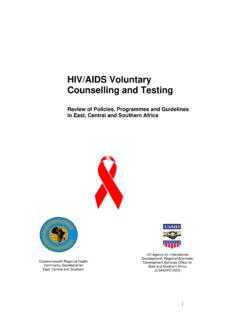Transcription of Tackling child sexual exploitation - Barnardo’s
1 Helping local authorities to develop effective responsesTackling child sexual exploitationworking in partnership with:Introduction 11. Raising awareness 22. Understanding what is happening 53. Developing a strategic response 74. Supporting victims of exploitation 125. Facilitating policing and prosecution 15 Summary 16 Appendix A: Definition 17 Appendix B: References 17 ContentsAcknowledgementsBarnardo s and the local government Association are grateful to a number of individuals and agencies for their assistance in developing this briefing. In particular, we would like to thank the London Safeguarding Children Board for its support in planning and refining the briefing outlines the elements of an effective local response to child sexual exploitation .
2 It suggests how local authorities and other stakeholders can tackle this abuse, and the advantages of partnership working and information will differ in their responses, but some components are central to any effective action. This briefing consolidates guidance, legislation and good practice to show the key elements of a comprehensive local response:raising awareness understanding what is happening developing a strategic response supporting victims of exploitation facilitating policing and prosecutions. These are ongoing processes rather than one-off steps so they need to be monitored and revised against changing local needs if the response is to remain effective.
3 In order to assist areas in establishing and maintaining action, Barnardo s has developed a five-point progress checklist:*Are professionals in your area trained to spot the signs of child 1. sexual exploitation ?Is a system in place to monitor the numbers at risk of child 2. sexual exploitation ?Does your area have a strategy in place to tackle child 3. sexual exploitation ?Is there a lead person with responsibility for coordinating a multi-4. agency response?Are children able to access specialist support for those at risk of 5. sexual exploitation ?
4 * Barnardo s (2011-12) Cut them free from sexual exploitation : checklists for local authorities and councillors. See Appendix B for child sexual exploitation 1 child sexual exploitation is a form of abuse. It involves children and young people being forced or manipulated into sexual activity in exchange for something money, gifts or accommodation or less tangible goods such as affection or status. The sexual activity and exchange may be seen as consensual, but are based on an imbalance of power which severely limits victims 2010, the scale of this abuse has become much clearer, with complex police investigations leading to successful prosecutions of multiple abusers, substantial contributions to the research evidence and the launch of a two-year Inquiry by the Office of the Children s Commissioner for England into sexual exploitation in gangs and In 2011.
5 The government acknowledged the prevalence of this abuse by appointing the Children s Minister as the lead minister for child sexual exploitation and by producing a National Action Plan to ensure that everything which can be done is done to make our children safer from sexual exploitation (Children s Minister, foreword to the National Action Plan).3A role for local authorities and other agenciesThe National Action Plan outlines the expectation that all local authorities will want to:assess the local prevalence of this abuse develop appropriate responses where risks are National Action Plan acknowledges local Safeguarding Children Boards (LSCBs) as being central to achieving these aims.
6 It also emphasises the role of other agencies. Among those mentioned are: schools; police; children s services; health agencies; services for looked-after children and care leavers; and the youth justice system. The Plan also notes how third-sector agencies can raise awareness and help victims to try to recover and to seek roles reflect those in the 2009 guidance: Safeguarding children and young people from sexual This comprehensive guidance is still relevant and is being reissued, but it was not widely implemented before the National Action Plan.
7 A study by the University of Bedfordshire found that by mid-2011, only a quarter of England s LSCBs had implemented the 2009 Implementation has increased since, and by April 2012, almost two-thirds of England s 152 local authorities had pledged to develop an action plan, as measured by those signed up to Barnardo s Cut them free However, many areas are still developing or updating their response. This briefing is intended to assist areas in developing and maintaining an effective local response. It outlines five key elements which are central to good practice,7 and gives examples of local areas which have demonstrated how these elements help to tackle sexual exploitation .
8 The key elements are:Raising awareness1. Understanding what is happening2. Developing a strategic response 3. Supporting victims of exploitation 4. Facilitating policing and Introduction 1. A full definition is given in Appendix A. 2. See Appendix B for key contributions to research evidence by the child exploitation and Online Protection Centre (CEOP), the University of Bedfordshire and Barnardo s. 3. Department for Education (2011). 4. Department for Children, Schools and Families (2009a). 5. University of Bedfordshire (2011). 6. (accessed April 2012).
9 7. National Working Group for Sexually Exploited Children and Young People ( )2 Tackling child sexual exploitation It is important that all young people develop the knowledge and skills they need to make safe and healthy choices about relationships and sexual health. This will help them to avoid situations that put them at risk of sexual exploitation and to know who to turn to if they need advice and support.. The need for information goes wider .. to raise the awareness of parents and professionals as well. 8 The National Action Plan and the 2009 supplementary guidance on safeguarding from child sexual exploitation both emphasise the importance of awareness raising for two reasons.
10 To help protect children and young people from being abused, by teaching them what to look out for, what to do if they are threatened and where to turn for supportto identify those who have been sexually exploited, by informing parents and carers and by training professionals in what to look out for and what to do if they suspect is essential that people are aware of the threat and the signs of sexual exploitation even if it does not appear to be occurring in their area. Firstly, children and young people spend time in many different areas.

















